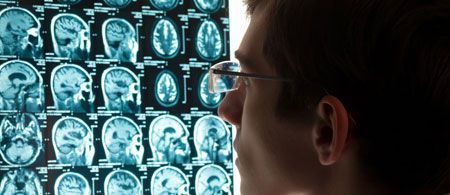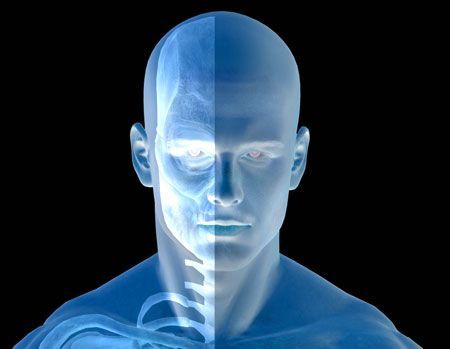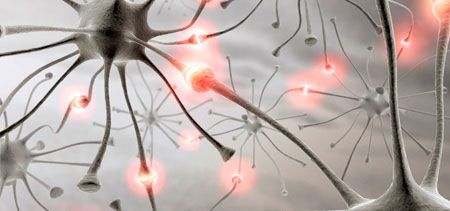OUR PROGRAM
What To Expect:
Our Passion Is Your Peace Of Mind
At Richmond Chiropractic Neurology, all new patients undergo a three-step process as we look into your specific health condition(s). We will discuss how it evolved and how it’s affecting your neurological and biochemical systems.

THE FIRST VISIT: We know how important it is that your health care team is listening to you, and we mean REALLY listening. We will spend an hour together at your first appointment, that includes a consultation, a complete medical history, a preliminary exam, and other tests as time allows. This is also when you should ask your important questions.
Please bring with you any and all laboratory, imaging, or other pertinent tests or reports from other physicians you’ve seen, as well as the online New Patient Forms and questionnaires that we asked you to fill out.
If you have a particularly complex history, we often take the first hour to ensure we understand the entirety of what is going on – and that you feel confident in our understanding. It’s critical that you know and feel, you are heard. We may request further information, and thus at the second visit, we will begin your examination process.
If you are in an emergency situation, or if you have traveled a considerable distance, we may initiate a preliminary treatment for relief, as well as to find out if our type of care has a probability of helping you.
THE SECOND VISIT: The second visit is a 30-minute appointment with Dr. Smith. This appointment starts with state-of-the-art, painless, and non-invasive diagnostic evaluations to assess your brain function. Dr. Smith will evaluate your brain function by looking for right- and left-brain activity. Dr. Smith will observe how the brain is working in relation to balance, posture, gait, strength or weakness patterns, and movement (usually the eyes). During the second visit usually some preliminary treatment(s) is initiated to determine if these methods will work for you. If they do, we will offer you a third visit where we will present a care plan.


THE THIRD VISIT: During the third visit Dr. Smith reviews the examination findings, explaining what’s been revealed and what it means for your health. Dr. Smith will then discuss your care plan, the proposed frequency of visits, what types of brain rehabilitative exercises may benefit you, and what other rehabilitation therapies may assist your healing. Financial considerations will also be discussed.
The third visit is usually a 30-minute appointment, as this is often when you will have more questions.
With a care plan established, we ask you to schedule your appointments in advance, as it is the best way to promote your recovery. That way you can choose the best times according to your personal scheduled and responsibilities.
THE FOURTH VISIT & BEYOND: At each subsequent visit we monitor your progress, perform on-going examinations to determine the efficacy of the care plan, and alter treatment protocols as needed. At the end of the schedule care plan, we may do some repeat evaluations and/or laboratory tests to determine the next level of care. As you improve, you can expect changes to your in-office and home programs.
We are confident as you see positive changes begin to take place you will come to regard your treatment with our team at Richmond Chiropractic Neurology a top priority.

The Program
After Dr. Smith has taken you through to step three, he will ask you to participate in a care program designed to get you the changes you are seeking.
Why a program? Because it’s the best way to get you the results we are seeking.
But WHY is that? This will take a bit of explanation, yet it is quite simple.
It’s become apparent in neuroscience, as well as in the evaluation of laboratory tests, that disturbances in function precede disease pathology. If you have a pathology / disease, you will usually have disturbances of function along with the disease itself.

Many conditions or disorders are often nothing more than parts of the brain or body that are under- or over-functioning. Using the principles of neuroscience, an evaluation for neurologic signs of dysfunction will reveal either “hard” or “soft” neurologic signs, or both.
- Hard neurologic signs are those that indicate tissue destruction, such as stroke or Parkinson’s disease, etc.
- Soft neurologic signs reveal functional changes that are not associated with tissue destruction but are associated with areas or regions of the brain or nervous system that are under- or over-functioning.
Traditionally, trained physicians of all specialties ignore soft signs, even though they are the best way to understand your issues, because there are no drugs or surgeries for the majority of soft signs. Most practitioners of Functional Neurology and Rehabilitation have repetitively seen that treatment to reduce or eliminate soft signs will often restore function to the point that symptoms come under control or disappear.
After a thorough soft sign evaluation, it becomes apparent that most of the soft signs will be representative of one side of the brain being more dysfunctional than the other. Because areas of soft sign dysfunction have been shown to respond to physical and cognitive types of therapies through what has become to be called “neuroplasticity”, we will then administer diverse therapies to stimulate a more normal function of your brain, nervous system and physiology. The key point here is to stimulate only those areas that are functional. For example, if your right-brain is slower, do not stimulate the left-brain. This is critical and usually makes all the difference in the outcome.
HOW DOES IT WORK?

In order to create proper brain function and reduce or eliminate your symptoms, certain requirements must be met. Those requirements are that your brain must have adequate fuel and activation.
FUEL means that your biochemistry is optimized. This may include dietary strategies along with supplements. The cleaner the diet, the fewer supplements are needed in the long run. (Lab tests are run to determine what supplements will best support you.)
ACTIVATION means that multiple painless and safe therapies are administered to stimulate your brain and nervous system back to optimal function. Because the brain requires stimulation from multiple sources in order to function optimally, we may use a variety of sensory and/or motor therapies including light, sound, smell, balance, vestibular, eye movements, neuro-feedback, cognitive or other brain-based learning types of approaches.

In Dr. Smith’s experience, therapies targeted to the weak side of the brain, or any weak pathway treated in context of the weaker brain hemisphere, often reduces signs and symptoms, and may improve “hard” sign manifestations. This is often seen in stroke rehabilitation.
Essentially this involves understanding that traditionally, medical science looks at health issues from a black-and-white perspective. For instance, it may be that you have a lot of symptoms and feel lousy, but all of your lab tests, or your neurologic evaluation or other tests, are normal. This is not only tremendously frustrating for you and others suffering with chronic conditions, it also misses the fact that most of our chronic conditions are actually in the “grey” zone and will not be found in the classic black-or-white ways of analysis.
Those trained in Functional Neurology and Functional Medicine (the application of nutrition to get at any underlying imbalances) are the ones best suited to understand what areas of your health are in the “grey” zones and find the right combination of therapies to assist you in restoring optimal function and health. The Functional Neurology approach looks at soft signs as “grey” biomarkers of dysfunction, and based off current scientific evidence, determines what the soft signs represent and how “soft” therapies can assist in restoring health.
What your responsibilities may be, and why:
You will be asked to participate in a scheduled program of care that involves multiple visits over weeks to months. This is to ensure that you get the results you want, and it is similar to all types of therapy such as stroke rehab or any physical therapy.
Because of the way our brain, nervous system, tissues, and biochemistry work, successful outcomes are more likely to occur when a program of progressive care is undertaken.
Why? Restoration of function requires that stimulations be frequent enough, intense enough (but not too intense), and with enough time (duration) to result in neuroplasticity (changes in brain function). This is the FIT approach used throughout all of physical medicine and rehabilitation. Therefore, you will be asked to enroll in a program of care that is created to result in optimal restoration of function. Your program results will be carefully monitored for adequate progress and therapies adjusted to meet your requirements as you improve.
If insufficient or no progress is seen, we will discuss your option for alternative care sources. It is common to ask patients to
initially commit to three to six months of care in order to create the lasting changes that are desired, especially in the chronic, severe and complex situations.
While a significant portion of this treatment occurs in the office, ultimately
how successful your program will be depends on you, the patient.
You will be required to perform specific rehabilitative exercises at home every day, and usually several times a day.
As part of your comprehensive program, depending on your lab results and overall condition, you will probably be asked to make specific upgrades to your diet, and to take certain supplements. Often if your condition is chronic, complex and severe, we will request rather significant upgrades. Such needs for supplements or dietary upgrades will be explained in detail at the time when they are prescribed.
While showing up to your appointment is critical, it will not be enough to create lasting change that you want – you simply must commit to doing the home rehabilitative therapies between visits that Dr. Smith prescribes.




